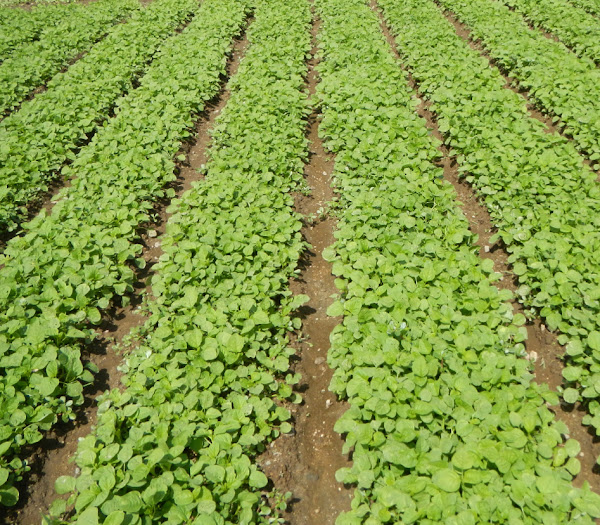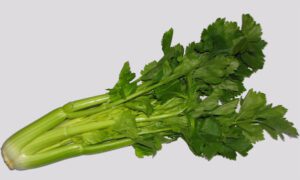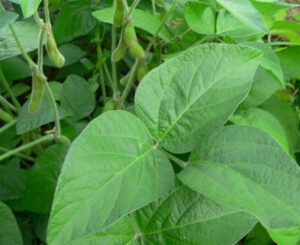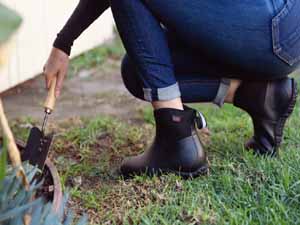Growing spinach organically in your home garden can be a good way for enjoying this great vegetable.
Spinach (Spinacia oleracea) is a cold hardy vegetable and it is mainly grown for it’s tender green leaves.
If you are a beginner home gardener and prefer vegetable gardening, growing spinach organically is a great addition.
Spinach is a very tasty and nutritious vegetable. It is an excellent source of some essential vitamins, and also one of the healthiest sources of minerals and nutrients that we can grow organically in our home garden.
Green spinach leaves are generally consumed as vegetables in many different ways (either fresh, frozen, chipped, canned or dehydrated).
Raw spinach is 3 percent protein, 4 percent carbohydrates, 91 percent carbohydrates and it contains negligible amount of fat. It is a great source of many different minerals.
How to Grow Spinach Organically
Growing spinach organically in the home garden may seems challenging, especially for the beginners.
Because most of the beginners face problems for germinating the seeds. However, follow these step by step guide for growing spinach in your home garden.
Choose a Variety
First of all, you have to choose the right variety for growing organically in your home garden. There are actually many different spinach varieties available. Both old and modern varieties are available.
But you should choose the more modern varieties, because the newer varieties tend to grow more rapidly and they have less of an inclination to run up to seed (new varieties have broader leaves and round seeds).
While the older varieties tend to bolt too early in warm conditions, and they have narrower leaves and tend to have a stronger and more bitter taste.
Among many different types and varieties of spinach, 3 common types are savoy, semi-savoy and flat or smooth-leaf spinach.
The savoy type has dark green, crinkly and curly leaves. Leaves of the semi-savoy type is slightly crinkled, and it’s actually a hybrid variety.
While the flat type spinach has broad and smooth leaves that are much easier to clean than the previous two types.

So before planning for growing spinach organically in your home garden, think about the type of spinach you’d like to grow. All these basic 3 types of spinach are wonderful in their own way.
You can also consult with some existing home gardener in your area and ask them which type of spinach they are growing.
Some popular spinach varieties are Giant Nobel, Winter Bloomsdale, Malabar, Tyee, Melody, Olympia, Wolter, Nordic IV, Indian Summer and Avon.
Purchase Seeds
Always purchase new and quality seeds for growing spinach. Spinach seeds don’t store well, so always try fresh seeds every year.
Spinach are available throughout the world. So you will easily be able to purchase seeds from any of your nearest seed supply stores.
You can also order the seeds online, as some suppliers have online stores and accept orders online.
Best Time for Growing Spinach
Spinach grow well throughout the winter season. Although today there are some varieties available that can be grown throughout the year.
For northern areas with relatively low temperatures, sow the seeds as early as six weeks prior to the last frost or as soon as you can work on the soil.
Preparing the soil in the previous autumn will be good. And in the areas with long cool spring, make successive planting every 10 days until mid-May.
While in the areas with warm climates, you can sow the seeds in the shade of tall crops such as corn or beans.
In the tropical areas, the spinach grow best during the winter season. Remember, the soil needs to be cool for better germination.
Preparing the Soil
Spinach grow well in areas with full sun and well-drainage system. Loamy soil with lots of organic materials will be good for growing spinach.
pH level lower than 6.0 will not be good for growing spinach. Prepare the soil by adding well-rotted aged manure or organic compost before planting seeds.
Planting
Spinach seeds are planted directly in the prepared soil, rather than growing indoors and transplanting later.
Although the seedlings can be propagated indoors, but it’s not recommended (because the seedlings are difficult to transplant).
Sow the seeds about 1/2 inch deep, covering lightly with soil. Sow seeds heavily, because sometimes the germination rate of the spinach seeds may drop to about only 50 percent (don’t worry, you can thin later).
The seeds will germinate in 5-9 days if the weather is not extremely cold. Water the seed beds frequently for better germination in the warm weather.
Frequent watering (even twice a day) will help to keep the soil cool, and it will ultimately results in better germination.
Caring
After planting the seeds directly in the seed beds, additional caring will ensure good growth of the spinach plants. Here are the common caring steps for growing spinach.
Fertilizing
Additional fertilization is not required if you have already prepared the soil by adding lots of organic materials.
Additional fertilizing is only required if you notice slow growth.
You can fertilize the plants with organic fertilizers such as fish emulsion or compost tea when the plants have at least 4 true leaves.
Watering
Regular watering is a must for growing spinach. Spinach are leafy plants and they require lots of water for better growth, so water regularly.
Mulching
Keeping the soil moist is very important for growing spinach. Mulching will help to keep the soil moist, and it will also help to prevent weeds.
Thinning
The spinach plants will not grow well if they are overcrowded. So you will need to thin the seedlings.
Thin the seedlings to 4-6 inches apart to avoid overcrowding once they have at least 2 true leaves.

Controlling Weeds
Your spinach will not grow well if there are weeds in your garden. The weeds will consume most of the nutrients from the soil.
So controlling weeds is important. Using a light mulch of grass clippings, straw or hay will help to control most of the weeds from your garden.
Be very careful while cultivating or hand pulling the weeds, because these can harm spinach roots.
Pests and Diseases
Pests and diseases are relatively less in spinach as most of the spinach variety are grown in very cool weather. Although they are not totally free from all these.
Leaf miners are the most common pests which you may notice while growing spinach in your home garden.
Leaf miner larvae can burrow inside the leaves and produce tan patches. Keeping your crop covered with floating row cover will help to get rid of leaf miner problems. Destroying the affected leaves will also be helpful for preventing this pest.
Downy mildew and spinach blight are the major disease of the spinach plant which are spread by aphids. Stunted plants with yellow leaves are the symptoms of spinach blight disease.
Downy mildew disease results yellow spots on leaf surfaces and mold on the undersides. You should plant the spinach variety that are resistant to these disease.
Harvesting
This is the most pleasuring part of growing spinach in your home garden. Depending on the spinach variety, you can expect to start harvesting after 6 to 8 weeks of planting.
Initially, you can harvest only the leaves (when the leaves reach your desired size) and this will extend the plant’s productivity. And later start harvesting the entire plant.
You should not wait too long for harvesting or wait for the longer leaves. Because bitterness will set in quickly after maturity.
These are the common steps for growing spinach organically in your home garden. Hope you have enjoyed this guide! Happy gardening 🙂






